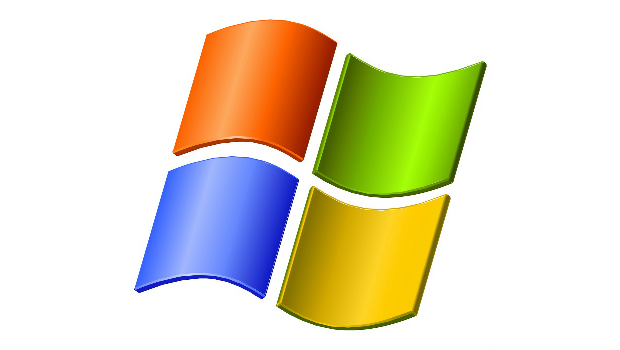 Microsoft is fond of telling customers just how long Windows will be actively supported. If you live in the West, at time of writing there’s just over a month before users have to upgrade to Windows 8.1 (or anything from Windows Vista onwards). To do this you have to either by new software or a new PC but what should be proving a massive boon to manufacturers has proved a slow process marred by user indifference, tight domestic budgets and cheaper alternative devices.
Microsoft is fond of telling customers just how long Windows will be actively supported. If you live in the West, at time of writing there’s just over a month before users have to upgrade to Windows 8.1 (or anything from Windows Vista onwards). To do this you have to either by new software or a new PC but what should be proving a massive boon to manufacturers has proved a slow process marred by user indifference, tight domestic budgets and cheaper alternative devices.
But why is it proving so hard to dislodge an operating system released in 2003 2001 from its spot as the second most used version of Windows in the world? A combination of satisfactory user-experience and reliability have worked in its favour against the wishes of its creator. According to Statcounter, 19.2% of all Windows users still using XP, behind the excellent Windows 7, which commands 54%.
In fairness, Win 8’s sluggish uptake hasn’t been helped by the global recession and the popularity of tablets like the iPad. According to research firm Gartner, 2013 saw a record-making decline in OEM’s shipments of 6.9%. Brands like Asus and Acer have been decimated although Lenovo and Dell actually increased shipments by 6.6% and 6.2% respectively. HP was beaten into second place by the Chinese manufacturer for the first time, dipping 7.2% for the year. Further illustration of the slump comes in Sony’s decision to exit PCs and stick with mobile devices.
The combination of slow uptake and weak PC sales – especially in emerging markets – hasn’t gone unnoticed. As reported on TechCentral, XP support will continue in China, where 57% of PCs use it and 70% of those have never had a security update installed. Don’t be surprised if Africa – where 32% of PCs run XP – becomes the next territory to get a reprieve.
Could Microsoft have done more to establish Win 8 as not just a logical upgrade as an operating system of choice? Yes, it could have done lots more.
On a practical level, the new Windows Modern UI (nee Metro) was a departure from the desktop familiar to millions worldwide. It represented no real benefit to the home user and even acts as a barrier to productivity. If Microsoft wanted to sell Win 8 as the next logical step in PCs it needed a massive charm offensive and educational outreach programmes. Instead, the marketing pushed the emotional over the practical, showing what you can do instead of how you do it and not mentioning the benefits of ditching the desktop.
Advertisements featuring children painting on a touch screen and using Skype did not gel with users looking for a productivity tool. The Modern UI is the cornerstone of the ‘one Microsoft’ idea of a common multi platform interface but it doesn’t solve a problem for the user.
Those guys again
If Microsoft wanted to see how to launch a new OS it could have looked to Apple for an example of how to get it done.
OS X enjoys a refresh every year with a limited support cycle and about half the user base (about 7.9% of the total market, according to Statcounter) runs the most recent version. This can be attributed to a couple of variables, principal among them being customer loyalty. There’s not a lot Microsoft can do to create its own version of the Mac fanboy but it could have picked up two other elements that have helped foster that culture.
First, Win 8 should have been competitively priced. Mavericks is the most popular version of OS X not just because of new features and compatibility with old machines: it was free. Microsoft had a giant to kill in XP and assumed customers would pay to do it for them. When that didn’t work, it reached out to techies to act as brand advocates to get them to help take it out. Where marketing failed an appeal to common sense was made – with similar results.
Making an upgrade cheap/free is one thing but Microsoft also failed to do something Apple is also adept at: making migration easy. Installing new versions of OS X is a painless procedure, that preserves settings, apps and personal data. Not so with Windows, where the user has to start again. This has been an ongoing problem with Windows but if the operating system is to go into a rapid refresh cycle the user cannot be met with resistance.
Is Windows 8 the new Vista? An upgrade for the sake of Microsoft’s internal marketing vision? The solution to a problem no one had in the first place? Yes, yes and yes, but it didn’t have to be that way. Now it’s up to CEO Satya Nadella to convince us Win 8 is a wise investment, or at least get everyone excited about Win 9.
UPDATE: Microsoft has rubbished reports that Windows XP will have extended support in any territory. In a statement, Microsoft said it would work with third party Chinese antivirus vendors to provide ongoing security support, but no official patches will be issued after 8 April. The reporting error was attributed to a mistranslation by IDG News Service.







Subscribers 0
Fans 0
Followers 0
Followers